

Hydrangea Flowers: A Comprehensive Guide to Growing and Caring for Your Hydrangeas
Introduction
Hydrangea flowers are a favorite among gardeners. Their vibrant colors and unique shapes add charm to any landscape. Whether used in gardens or floral arrangements, hydrangeas stand out. With various types available, they adapt well to different care needs. This guide will help you grow and care for your hydrangeas.Summary and Overview
Hydrangeas are stunning flowering shrubs known for their large blooms. They typically bloom from late spring to early fall, offering a colorful display. Their flowers can be blue, pink, white, or even green, depending on the variety and soil conditions. Hydrangeas thrive in many climates, making them versatile garden favorites. Proper care is essential for healthy growth. They prefer well-drained soil and can benefit from regular pruning. Planting techniques also play a crucial role in their success. With the right attention, hydrangeas can flourish, bringing beauty to your garden for years to come. Understanding their needs is key to enjoying these lovely plants.
Speaking of proper care, a great way to give your hydrangeas a boost is with Miracle-Gro Water Soluble All Purpose Plant Food. It’s like a buffet for your plants, ensuring they have all the nutrients they need to thrive!
Planting Hydrangeas
Are you ready to start your hydrangea garden? Planting hydrangeas can be a rewarding experience, but timing and location matter. The best time to plant hydrangeas is in the spring or fall. Aim for a spot that gets morning sun but offers some afternoon shade. This helps protect them from harsh sunlight. Next, let’s talk about soil. Hydrangeas thrive in well-drained, rich soil. Amending your soil with compost can boost its quality. Make sure the pH is suitable for the type of hydrangea you choose. For example, acidic soil can give you blue blooms, while alkaline soil can yield pink ones. For more information on adjusting soil pH for optimal plant growth, check out this comprehensive guide on soil pH testing and adjustment.Now, onto the planting process! Follow these steps for success:Understanding soil pH is crucial for achieving the desired bloom colors in hydrangeas. Learn more about soil pH testing and adjustment.
- Prepare the soil by mixing in organic matter to improve drainage and nutrients.
- Dig a hole that’s about 2-3 times wider than the root ball.
- Place the hydrangea in the hole, ensuring it sits slightly above ground level.
- Backfill with soil, gently firming it around the roots.
- Water well after planting.
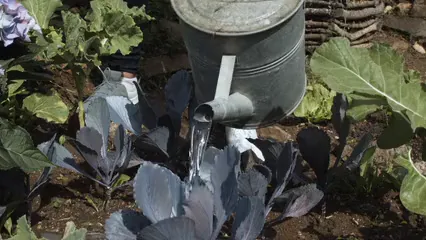
While you’re at it, consider using VIVOSUN 5-Pack 5 Gallon Grow Bags for your hydrangeas. They offer excellent drainage and aeration, which can really help your plants thrive!
Care and Maintenance
Once your hydrangeas are in the ground, proper care is essential. Watering is crucial, especially in the first year. During hot months, aim for deep watering twice a week. This helps establish strong roots. As your plants mature, you can reduce watering to once a week. Fertilization can boost your hydrangeas’ growth. Use a balanced, slow-release fertilizer in early spring. Mulching around the base helps retain moisture and suppress weeds. A layer of mulch about 2-3 inches thick works best. Keep an eye out for common pests like aphids and beetles. Regular inspections can help catch these issues early. If you notice any pests, a simple spray of water can often remove them. For more information on pest control, consider reading about organic pest control methods.Seasonal care is also important. In winter, protect your hydrangeas by covering the roots with mulch. This shields them from freezing temperatures. Regular maintenance will keep your hydrangeas healthy and blooming beautifully throughout the seasons!Protecting your hydrangeas from pests is essential for their health. Explore organic pest control methods to keep your plants thriving.
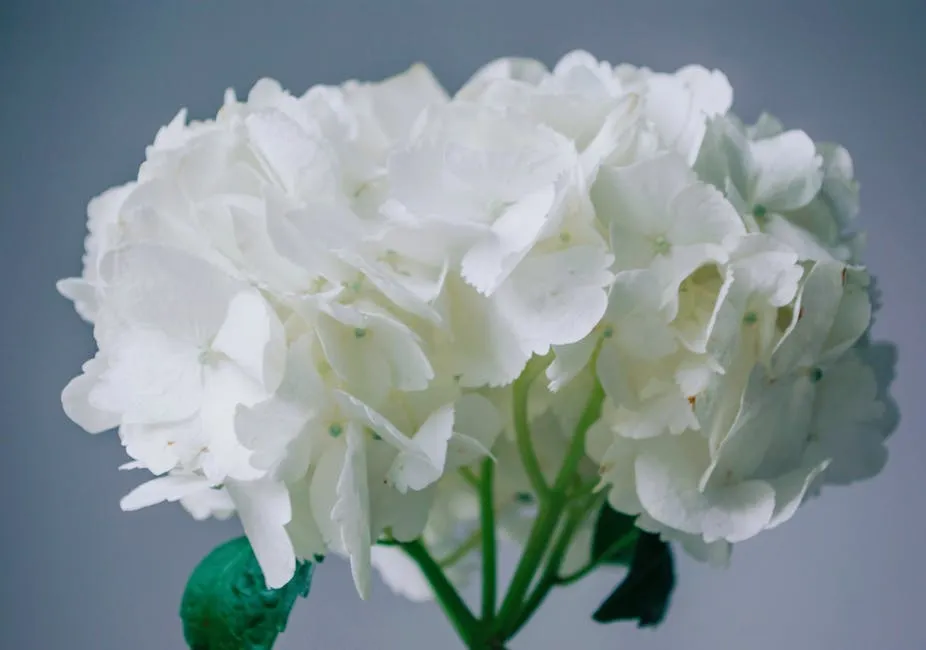
If you’re looking for a great all-purpose fertilizer to keep your plants happy, consider Espoma Organic Garden-tone Fertilizer. It’s organic and specially formulated for flowering plants, helping them bloom like never before!
Pruning Hydrangeas
Pruning hydrangeas is vital for healthy growth and vibrant blooms. The timing depends on the type you have. For most varieties, late winter or early spring is ideal. This ensures you don’t cut off flower buds that have formed. When pruning, you’ll need sharp, clean tools. Start by removing any dead or damaged stems. For those that bloom on old wood, like Bigleaf hydrangeas, cut back only after flowering. For new wood types, like Panicle hydrangeas, you can prune more aggressively. Proper pruning promotes better air circulation and encourages new growth. It also helps maintain the plant’s shape. Regular checks can help you decide when a prune is necessary. Take a moment to check your hydrangeas today; they might just need a trim!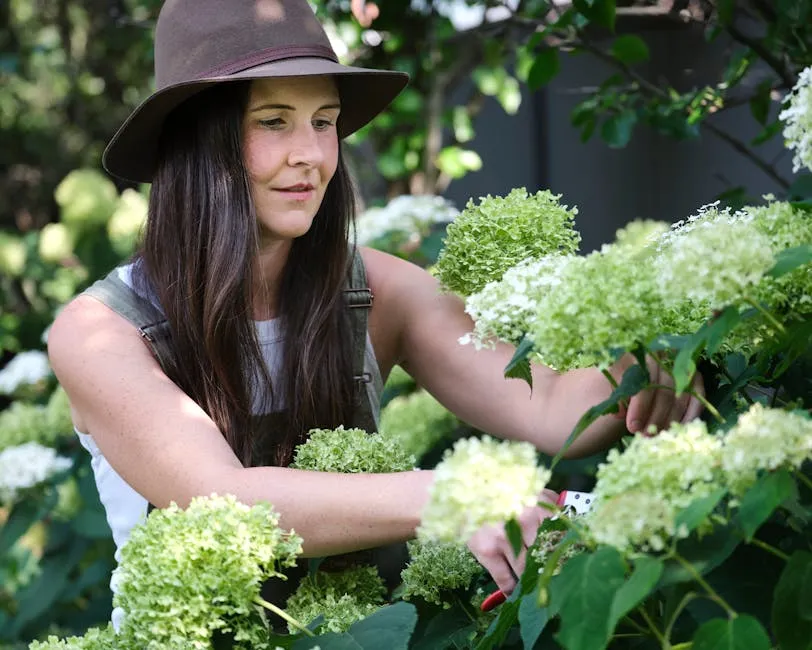
Don’t forget to equip yourself with the right tools! A good pair of Fiskars 3910 Pruning Shears can make all the difference. They’re sharp, reliable, and will help you prune like a pro!
Common Problems and Solutions
Growing hydrangeas can be rewarding, but challenges may arise. One common issue is disease. Hydrangeas may suffer from bud blight or bacterial wilt. Regular inspections can help catch these problems early. If you notice wilting or yellowing leaves, remove affected areas immediately to prevent spread. Another frequent concern is non-blooming hydrangeas. This could result from improper pruning or insufficient sunlight. Ensure your hydrangeas receive at least four hours of sun daily. If they are pruned too late, you might lose next season’s blooms. Adjust your pruning schedule based on the specific type of hydrangea you have. Pests can also impact your hydrangeas. Common culprits include aphids and Japanese beetles. These pests can weaken your plants and reduce flowering. Monitor your plants regularly, and consider introducing beneficial insects like ladybugs for natural pest control. In severe cases, insecticidal soap can be effective. Consulting local gardening experts can provide tailored solutions for your hydrangea problems. They can offer advice specific to your region and plant type. With proper care, your hydrangeas can thrive beautifully.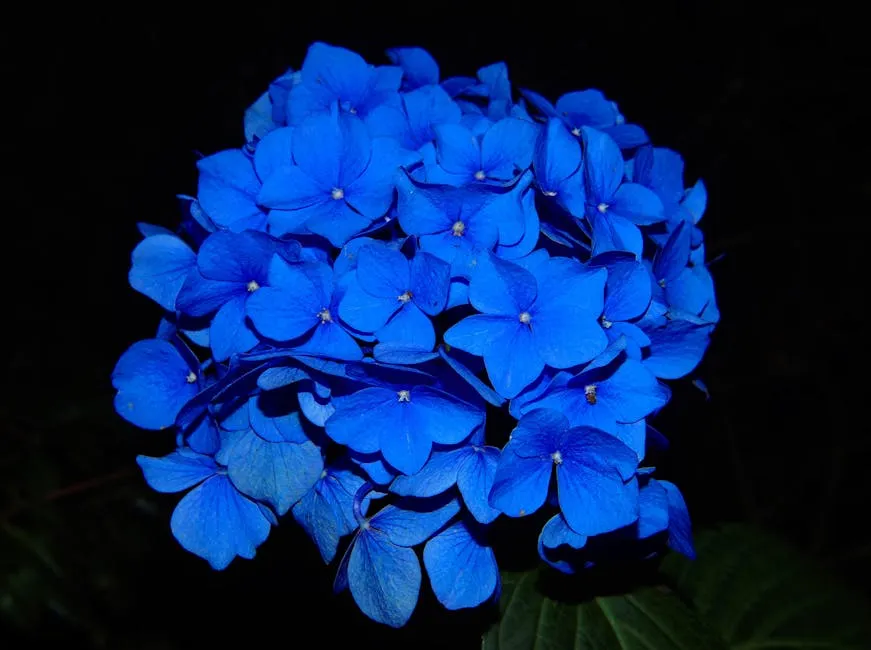
If you’re planning to create a beautiful garden space, consider investing in Garden Safe Brand Neem Oil Extract. It’s an excellent organic solution for pest control that helps protect your hydrangeas without harming beneficial insects!
Landscaping with Hydrangeas
Hydrangeas bring stunning beauty to any garden. Their vibrant blooms can enhance your landscape design significantly. When planning your garden, consider planting hydrangeas in clusters. This creates a focal point that draws the eye. Companion plants work well with hydrangeas. Consider pairing them with hostas or ferns for an appealing contrast. These plants thrive in similar conditions, making them ideal partners. Additionally, seasonal interest is vital. Choose varieties that bloom at different times for continuous color. Color coordination is essential, too. Think about your overall garden theme. Mix pink, blue, and white hydrangeas for a lively display. Popular landscaping styles often incorporate hydrangeas as borders or hedges, adding elegance to pathways.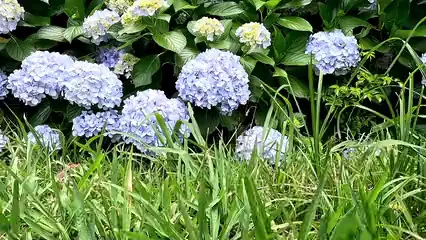
For those looking to add more structure to their garden, a Garden Trellis for Climbing Plants can complement your hydrangeas beautifully. They provide vertical interest and can support other plants that thrive in your garden!
Conclusion
Hydrangea flowers truly shine in any garden. Their vibrant colors and unique shapes create stunning displays. Plus, they are versatile and can thrive in various conditions. With minimal care, hydrangeas reward you with beautiful blooms for years. If you haven’t tried growing hydrangeas yet, now is the perfect time! Experiment with different varieties to find your favorites. Whether you choose classic blue, pink, or white, hydrangeas will enhance your garden’s beauty. Start your hydrangea adventure today!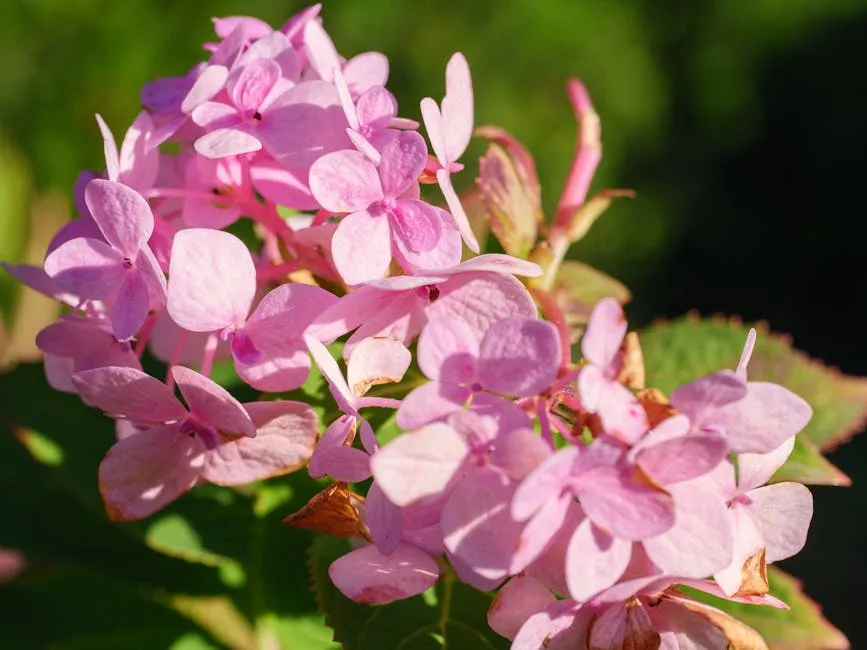
And if you’re in need of some serious gardening inspiration, check out The Flower Gardener’s Bible by Edward C. Smith. It’s packed with tips and tricks to make your garden bloom beautifully!
FAQs
When do hydrangeas bloom?
Hydrangeas typically bloom from late spring to early fall. Bigleaf and Oakleaf varieties bloom in summer, while Panicle types often start a bit earlier.
How do I change the color of my hydrangeas?
To alter their color, adjust the soil pH. For blue blooms, aim for acidic soil (pH below 6). For pink blooms, make it alkaline (pH above 7) by adding lime.
Can hydrangeas be grown in pots?
Yes, hydrangeas can thrive in pots! Use a high-quality potting mix and ensure the pot has good drainage. Keep them in a spot with morning sun and afternoon shade.
Are hydrangeas toxic to pets?
Yes, hydrangeas can be toxic to pets. All parts of the plant contain compounds that can cause gastrointestinal issues if ingested. Keep them out of reach.
What are the best hydrangeas for beginners?
For beginners, consider the Smooth and Panicle hydrangeas. They are hardy, easy to care for, and can adapt to various conditions, making them perfect for new gardeners.
All images from Pexels



